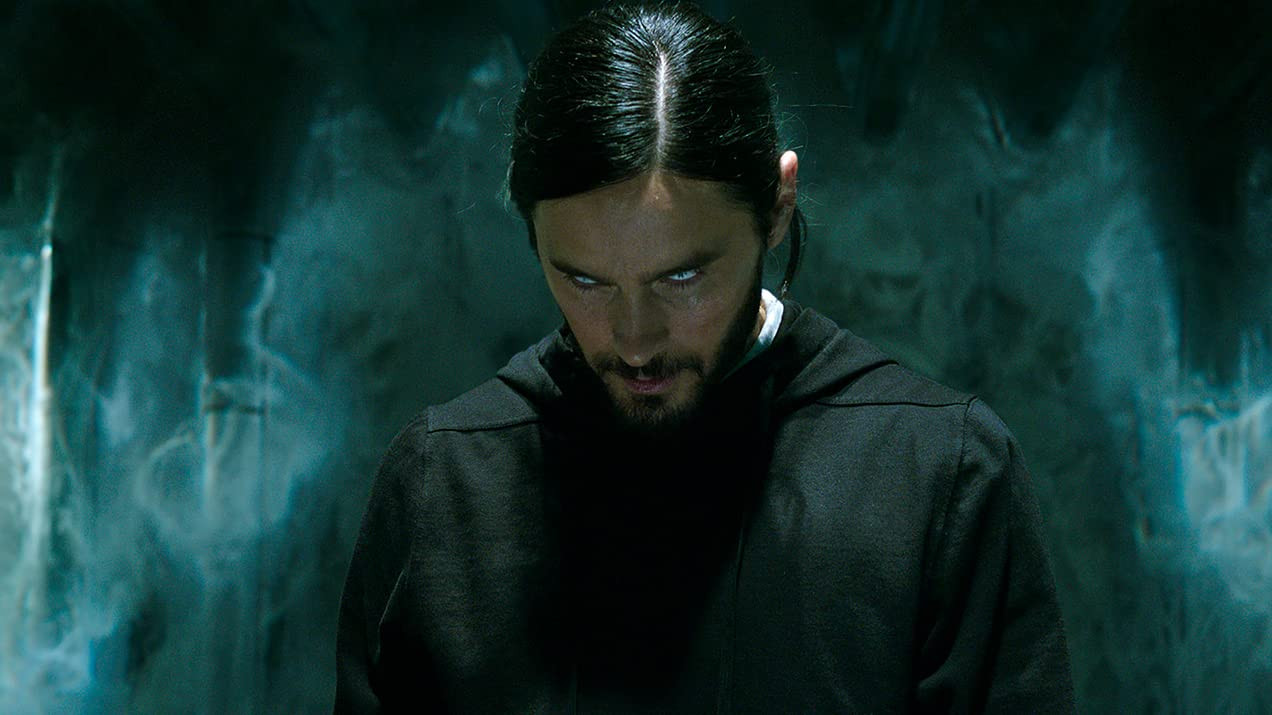
There is an art to wielding the power of stupidity in cinema. When walking into a screening of Morbius there is no real anticipation of intelligence or nuance. However, there is hope for a film that, while taking itself seriously, may be extravagantly awful enough to perhaps be crowned as “camp” and placed in the pantheon of films that are so bad, they’re actually good.
When you mix vampire horror, superheroes, Hollywood’s resident (not too endearing) weirdo Jared Leto and CGI that looks like it’s from 2010, that’s an understandable expectation. But Morbius is drained of imagination to the point that it can’t even make its brainlessness enjoyable. It is, for all intents and purposes, the worst possible thing a monster movie should be: mind-numbingly mediocre.
With a plot that feels like it has been done to death, resurrected and then driven six feet underground once again, the film follows the pursuit of the genius biochemist Dr Michael Morbius to find a cure for his genetic blood disease, an illness that he shares with his best friend, benefactor and eventual nemesis Loxias Crown, played by Matt Smith. The (almost mad) scientist is hell-bent on combining vampire bat and human DNA to alleviate his suffering. What could possibly go wrong? Lo and behold, the DNA is spliced, the serum is injected, the perfected pecs are put on display, and the “living vampire” is unleashed with a thirst for human blood. The plot of the film unravels with unforgivable predictability and performances as exciting as stale bread.
Morbius manages to keep the beast at bay for a limited amount of time with his very own marvel of modern medicine, blue-coloured “artificial blood” that he helped develop and later rejected a Nobel Prize for because his invention just wasn’t good enough for him. If only Jared Leto had held up the script of the film to a tiny fraction of those standards, this review wouldn’t have existed.
Morbius ping-pongs between wildly thirsting for human blood and downing bags of the blue stuff like a five-year-old chugging a box of cold apple juice on a hot summer’s day. He kills some people in a surprisingly bloodless vampiric rage and (spoiler alert) ultimately concocts some poison to off himself since that’s the only way he can keep his bloodthirsty self from sinking his teeth into humans or going fully insane. Why he doesn’t put his apparent big-brain energy to use and just bleed a chicken or a goat dry is never explained. Considering all the rats he kills in his laboratory while experimenting with the vampire serum, it clearly isn’t out of a love of animals.
He is aided by fellow scientist, love interest and damsel in perpetual distress Martine Bancroft, essayed by Adria Arjona, whose sole purpose is to make goo-goo eyes at him and try not to get herself killed (she fails, kind of). She is as important to the plot as this dumpster fire of a film is to the Marvel universe. Loxias, after witnessing how the serum has given Morbius superhuman abilities, begs for the cure but is denied by the scientist who considers it a “curse”. The former goes from friend to foe in typical Harry Osbourne fashion, minus the convincing character arc, injecting some of the vampire serum into himself and transforming fully into the ultra-rich, unhinged evil psychopath the audience can see coming from a mile away.
The film’s action sequences add no excitement to the story. They play out like clockwork, with the final showdown between Morbius and Loxias easily being one of the blandest CGI fight scenes in recent superhero history. The two fly at each other in a choppy and unconvincing sequence as the eyes of the audience glaze over in a silent wait for the credits to roll so that they can go home and do literally anything else but this.
Harry Osbourne isn’t the only other Marvel character the film appears to imitate. Dr Curtis Connors, more famously known as Lizard, one of Spider-Man’s many nemeses undergoes a similar dodgy DNA recombination as Morbius in order to regrow a missing limb, transforming instead into the slithery mess most recently seen in Spider-Man: No Way Home. Morbius hangs from the ceiling like the infamous web-slinger, uses superhuman hearing while perched on the edge of a building like Daredevil, and, in a line delivered with every bit of seriousness he can muster, asserts to a duo of police officers, “I’m getting hungry. You won’t like me when I’m hungry.” If the hulk smashed the table in two, it wouldn’t come as much of a surprise.
The film feels like nothing more than a money-making gimmick composed of a mish-mash of already existing characters and storylines. The Vulture appears in the film’s post-credits scene, apparently tying it into the MCU Multiverse, which comes off as nothing more than Sony’s last-ditch effort to try and salvage its dying Spider-Man franchise. Morbius offers a masterclass in how just because you can make a film, doesn’t mean you should. Especially one as unnecessary and outrageously boring as this.
1716998435-0/Ryan-Reynolds-Hugh-Jackman-(3)1716998435-0-405x300.webp)






1730355716-0/Copy-of-Untitled-(59)1730355716-0-270x192.webp)
1730276684-0/Copy-of-Untitled-(55)1730276684-0-270x192.webp)
1730095495-1/WhatsApp-Image-2024-10-28-at-11-04-18-(1)1730095495-1-270x192.webp)





1730706072-0/Copy-of-Untitled-(2)1730706072-0-270x192.webp)
COMMENTS
Comments are moderated and generally will be posted if they are on-topic and not abusive.
For more information, please see our Comments FAQ